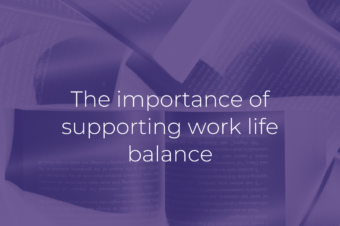
Held every April since 1992 stress awareness month aims to raise awareness of the causes and cures for our modern-day stress epidemic.
There is no health without mental health and stress can lead to a range of health problems, from physical problems, like heart disease, insomnia, digestive issues, immune system challenges, etc. to more serious mental health disorders such as anxiety and depression.
#ActNow is the slogan chosen for the 2023 campaign:
- Action
- Changes
- Things
Stress in the modern workplace
This is what the Stress Management Society have to say about stress in 2023: given that most of us spend over a third of our life at work, it’s essential to our wellbeing that we feel valued and appreciated. Multiple studies support this, indicating that social connectivity is key to fostering a sense of purpose and wellbeing in the workplace.
Yet many of us appear to lack a sense of belonging in our workplaces. The events of the last two years have seen countless numbers resign following a reassessment of their priorities. While some have quit to pursue dream careers, or to be a stay-at-home parents, the majority have resigned for different reasons: workplace culture and the way their employers treated them. Consequently, employers now face an unprecedented crisis, dubbed the ‘great resignation.’
Research shows that those with high levels of social support seem to be more resilient when faced with stressful situations; they also have a lower perception of stress in general and less physiological response to life’s stresses.
Coping with stress when working from home
Employees struggling with anxiety, depression, burnout, or bullying at work can be helped to cope with stress in the workplace or while remote working, and improve their work-life balance.
Establish a regular work routine – it can be very difficult to establish boundaries between work and home time, so many find themselves worker long hours. Try to keep regular office hours, starting and finishing at the same time every day. Some people find it useful to go for a walk before starting work in the morning and then again after finishing work in the evening. It can help you mentally switch from work to home mode and vice versa.
Schedule breaks and set boundaries – you always have to be available. Set aside time to take a break from the screen and have lunch, then turn off your phone and computer when you’re done for the day. Leave time between virtual meetings so you can review notes, action points and new information before the next meeting.
Designate a work space – if you don’t have a separate room to use as a home office, set aside a space to use just for work, rather than working at the kitchen table, for example. It’ll be easier to keep to a routine and separate work and home life.
Seek opportunities to work outside the home – if you miss being around other people, try working at a coffee shop or library, or renting a desk in a co-working space.
Set up face-to-face time with co-workers – to counter any sense of isolation, arrange regular meetings or social events where you can talk to colleagues and catch-up. If you freelance, reach out to other freelancers on social media and arrange face-to-face get-togethers.
.
.
If you have other top tips for helping your employees manage stress when working from home, let us know on social media by clicking one of the icons below.







